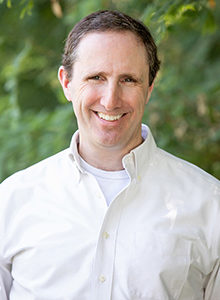Consider Dan Burger, a gifted and autistic computer science student at Vanderbilt University, Nashville, TN. In spite of the challenges he faced along his journey through school and into the workforce, Burger’s exceptional abilities at visual problem-solving and dealing with large amounts of data ultimately won out. His invention, a data visualization platform which NASA licensed, has been used, among other applications, to analyze information gathered by the Kepler space telescope. Today, he is employed by Google.

Anderson Cooper covered Burger’s story on 60 Minutes because his is a truly unique and remarkable story. Arguably too unique. Regrettably, this kind of story is not as prevalent as it should be because some 75% of autistic adults are either unemployed or under-employed relative to their ability.
At Vanderbilt’s Frist Center for Autism and Innovation, Burger experienced a supportive workplace culture which focused on his strengths rather than on his deficits. The Frist Center emphasizes inclusivity and excellence above all else. Mutual expectations center around precise, concrete, and respectful communications, resulting in a work environment characterized by professionalism and productivity.
Not all autistic individuals in today’s workforce are as fortunate, mostly because barriers to sustained employment of autistic individuals persist. Such barriers stem from fundamental misunderstandings between neurotypical and neurodivergent people which are yet to be sufficiently addressed. It is with the intent of wanting to bridge these misunderstandings and bring about more success stories like that of Burger’s that I introduce my vision for lasting and successful workplace neurodiversity. I call it the CAALE framework (pronounced like “kale,” the green vegetable): Collaboration; Accommodation; Acceptance; Listening; Empathy.
- Collaboration: When a company commits to cultivating a more inclusive workplace, they sometimes implement a neurodiversity hiring program as a means to that end. Google chose to collaborate with the Stanford Neurodiversity Project to ensure the success of their Autism Career Program. Likewise, with respect to Dell’s Neurodiversity Hiring Program and the Neurodiversity in the Workplace initiative. These and other collaborative efforts illustrate the importance of companies not going it alone when it comes to bringing neurodivergent individuals into their organizations. Neurodiversity hiring programs consider not only how candidates are evaluated and hired but also the onboarding process and the training of a company’s neurotypical employees as to how they can best interact and work with their neurodivergent colleagues.
Collaboration between neurotypical and neurodivergent co-workers often entails extra effort and keeping an open mind, considering the neurological, learning and thinking differences involved in this dynamic. The result is greater interpersonal intelligence. Collaborative skills are strengthened when, for example, colleagues take into account each other’s perspectives and unique personality attributes while working through a given problem to be solved.
- Accommodation: Neurodivergent individuals face some distinctive challenges in the workplace because we are neurologically different than most – not less capable or intelligent. As such, the proper accommodations help us fulfill our true potential. A few examples: accommodate autistics dealing with increased sensory sensitivities by designating one or more areas of a workplace as being free of bright lights, louder sounds, talking and excessive foot traffic, and with dispersed workspaces. Allow for frequent breaks and/or daytime siestas. Make written transcripts of meetings available for those who are visual as opposed to auditory learners. Assign structured, predictable, and/or repetitive tasks to autistic employees who tend to perform these kinds of responsibilities exceptionally well. Assign individualized tasks to neurodivergent workers who may struggle in team-oriented scenarios yet thrive on their own.
An accommodation will only be as effective as the degree to which the workplace understands why it is necessary and can accept that only some will be granted the accommodation. Otherwise, resentment, jealousy, and/or intolerance may set in when an employee asks, “Why is he entitled to this but I am not?” An accommodation should be viewed as an effort to level the playing field at a diversified workplace, not as a basis for stigma.
- Acceptance: Accept neurodiversity as being a natural attribute of the human population and that the workplace is better off acknowledging, accommodating, and embracing it rather than turning away from it. Accept that many of the hardships and challenges neurodivergent people face stem from societal expectations established by the neurotypical majority which therefore can be very difficult if not impossible for a neurodivergent individual to meet. Accept that neurodivergent people have lots to offer the workplace (as evidenced by Dan Burger’s accomplishments, for example) but only if the workplace cultivates an environment in which they are able to succeed. Accept all employees for who they are, allowing them to be their true, authentic selves without adverse consequences.
- Listening: We all have personal stories to tell. Personal stories often resonate with those to whom they are genuinely conveyed. As a neurodiversity community advocate, I would love for all neurodivergent people to tell their own stories so as to raise awareness and make way for acceptance. Furthermore, all employees, whether neurodivergent or neurotypical, have workplace needs and desires which are more likely to be honored if they are communicated. For example, to be heard, validated, and viewed as valued members of the workforce.
As important as it is for neurodivergent individuals to share what they would like their associates to know about them, it all ends up being for naught if they are not listened to. A workplace with which I would want to be associated is one at which all employees are invited to impart their personal stories, needs and desires, and at which co-workers listen to each other and take each other’s words to heart.
- Empathy: When an individual is able to imagine stepping into another’s world, view things from her perspective and feel what she is feeling, wondrous things become possible. Empathy, when exercised at the workplace, strengthens workforce cohesion. Differences, whether neurological or otherwise, are bridged. Employees achieve greater interconnectedness. The other pillars of the CAALE framework (collaboration, accommodation, acceptance and listening) are able to take hold. A company can implement the greatest neurodiversity hiring program in existence, but unless the workplace culture cultivates at least a measure of empathy, the goals of the program cannot be fully realized.
Empathy does not require anything extraordinary. All it takes is a desire and a commitment to do what is right and what is best for the organization and its people. Knowledge of the benefits of intra-workplace empathy can incentivize a company that aspires to greater inclusivity to help it flourish.
The CAALE framework was born from years of experience at an inclusive workplace of which I have been most fortunate to be a part as well as all that I have learned from other neurodivergent individuals who continue to tell stories about their challenges and triumphs at work and elsewhere. Dan Burger, myself, and many others are working to change the narrative around neurodiversity from one that focuses too much on stigma, marginalization and inability to one of acceptance, belonging, and acknowledgement of one’s strengths and unique abilities. More success stories are waiting to happen. Perhaps the CAALE framework can help at least some of these stories come to fruition.
Sam Farmer is a neurodiversity community self-advocate, writer/author, and public speaker. Diagnosed later in life as autistic, Sam shares stories of lived experiences, ideas, and insights as to how one can achieve greater happiness and success in the face of challenge and adversity. A Long Walk Down a Winding Road – Small Steps, Challenges, & Triumphs Through an Autistic Lens is his first book. Visit samfarmerauthor.com to learn more.
Sam would like to thank Tim Vogus for his contributions to this article. Tim Vogus is the Brownlee O. Currey, Jr. Professor of Management at the Vanderbilt University Owen Graduate School of Management and Deputy Director of the Frist Center for Autism and Innovation.







[…] just a few adjustments to your interview process and reasonable accommodation. I refer you to Sam Farmer’s recent article in Autism Spectrum News. He has lived experience and designed a new framework for employers to […]
[…] Farmer, a neurodiversity community self-advocate and individual with autism, shares a vision for lasting workplace neurodiversity. His “CAALE” framework (pronounced kale) establishes basic tenets that anchor most successful […]